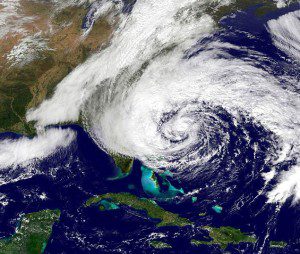The Life You Save Could be Your Own, or that of Your Loved Ones
This is a summary points made in our 2010 book “UNREADY: TO ERR IS HUMAN: The other Neglected Side of Hospital Safety and Security”.
Existing national efforts to protect patients from unnecessary death arising from healthcare acquired infections and treatment errors should be a priority health policy. Promoting a healthy insurance system which provides equitable access to quality care is a noble and just healthcare policy goal. Reduction of aggregated healthcare costs of such expanded care is critical to a sustainable healthcare system.
Lost in the passionate advocacy for these important policy pursuits in the healthcare system is the reality that the value of these achievements would pale by comparison in a multiple flash-bang of nuclear or dirty bomb explosion, slippage of the Pacific seismic plate, or a raging virulent pandemic.
 There are scattered “islands of excellence,†where hospital authorities and their communities have taken care to protect their stakeholders. However, the vast majority of hospitals across the nation have failed to “step up to the plate†and address their roles and responsibilities for healthcare security readiness. Under the category of “better late than never†is the National Health Security Strategy of the United States of America, touted as the nation’s first National Health Security Strategy (NHSS).
There are scattered “islands of excellence,†where hospital authorities and their communities have taken care to protect their stakeholders. However, the vast majority of hospitals across the nation have failed to “step up to the plate†and address their roles and responsibilities for healthcare security readiness. Under the category of “better late than never†is the National Health Security Strategy of the United States of America, touted as the nation’s first National Health Security Strategy (NHSS).
There was a time in the mid-twentieth century when hospitals and healthcare systems fully partnered with civil and military authorities in WMD preparedness and response efforts. To “protect in place†was not for days, but months. To “evacuate†was not only being prepared to “lift stranded groups of seriously ill patients from disabled hospitals,†but also to prepare to move entire populations out of harm’s way.
A quick review of the guidance to the healthcare industry over the last two decades is a stretch of the imagination to characterize the National Health Security Strategy (NHSS) as the “first call to healthcare industry to prepare for all-hazards readiness.†Instead, it is more like the most recent attempt to reorganize past failed attempts to rally the non-federal hospital and healthcare sector to “voluntarily†meet its basic obligations to prepare for homeland security protection.
Failure to protect a trusting public from all-hazards has no political parent. Both political parties are equal opportunity neglectors.
 Over the years, we have seen reams of partisan reports identifying what the previous administration has failed to do to protect the public from known threats. (So much for not knowing what had not been done.) Then, when faced with the reality of how difficult it is to move established power brokers, they attach the blinders.
Over the years, we have seen reams of partisan reports identifying what the previous administration has failed to do to protect the public from known threats. (So much for not knowing what had not been done.) Then, when faced with the reality of how difficult it is to move established power brokers, they attach the blinders.
Terrorist groups have little need to employ K Street lobbyists or to be creative in their quest to do us harm. They have a cafeteria style menu from which to choose.
Consider the specter of an ambulance loaded to the ceiling with 1,000 pounds of explosives, mixed with generous amounts of radioactive materials pulling up to an emergency entrance, and the driver ignites the bomb.
Consider a VIP limo, its windows darkened, also loaded with 1,500 pounds of explosives, heavily laden and integrated with ten-penny nails and ball bearings pulling up to the entrance of the hospital, which has attracted large numbers of employees expecting a visit from some celebrity, exploding as the door triggers the bomb.
Consider a woman pushing a wheelchair patient into the great glass atrium and igniting a concealed bomb.
Consider a uniformed utility repairman arriving with his equipment bag to repair a malfunctioning air-conditioning system. In his utility bag he has two cylinders of weaponized anthrax, which he skillfully introduces into the HVAC system.
Consider a parcel delivery person has an emergency delivery to the nuclear medicine clinic. It is a large cargo box with “Urgent†written on the top of the box. It appears heavy for one man to carry, so the guard brings a hand truck for its movement, the hand truck pushed into the cesium 137 blood irradiator storage unit. Attached to the package is a timer, which is timed to explode a potential dirty bomb in 30 minutes.
Consider late at night a lonely mortuary vehicle backs up to the morgue door and gets staff to help the driver unload two very heavy caskets. No one notices that they should be empty coming into the hospital. These are only a few from Menu A.
 Designing realistic response scenarios on which to exercise mass casualty triage is relatively easy. Crisp detail protocols staffed with your best and brightest are only effective in a protective physical environment in which staff are safe and supplies secure. Crowd control is often overlooked in planning all-hazards events. Had there been a chemical, biological, radiological attack in tandem with the 9/11 terrorist attacks, the lack of crowd control and porous hospital security would have resulted in contamination of existing healthcare resources. We have been faced with multiple natural disasters in recent years and, with notable exceptions, responded reasonably well.
Designing realistic response scenarios on which to exercise mass casualty triage is relatively easy. Crisp detail protocols staffed with your best and brightest are only effective in a protective physical environment in which staff are safe and supplies secure. Crowd control is often overlooked in planning all-hazards events. Had there been a chemical, biological, radiological attack in tandem with the 9/11 terrorist attacks, the lack of crowd control and porous hospital security would have resulted in contamination of existing healthcare resources. We have been faced with multiple natural disasters in recent years and, with notable exceptions, responded reasonably well.
 Managing CBNRE risk requires the understanding of differences between natural and man-made events. With the exception of earthquakes (even then, we know what is happening when it happens), most natural disasters are known in advance; in some cases brief notices, but enough to take steps to defend ourselves. Man-made events are difficult in predictability, casualty production, ratio between property loss and loss of lives, loss of periods of personal freedom, and recovery time.
Managing CBNRE risk requires the understanding of differences between natural and man-made events. With the exception of earthquakes (even then, we know what is happening when it happens), most natural disasters are known in advance; in some cases brief notices, but enough to take steps to defend ourselves. Man-made events are difficult in predictability, casualty production, ratio between property loss and loss of lives, loss of periods of personal freedom, and recovery time.
Bioterrorism is considered among the most pernicious of these threats. They are often in the environment well before they are detected, and the interval between exposure and detection could well spell the difference between life and death.
 Experience has shown us that there are substantial differences between and among local hospital preparedness across the country. No one has the corner on the blame. Congressional and federal oversight is spotty. Many states have neglected to pass needed enabling laws which remove serious barriers to an effective response system. Apathy, denial, as well as “cognitive dissonance†from other quarters ring hollow in standing up to the world of “to err is human.â€
Experience has shown us that there are substantial differences between and among local hospital preparedness across the country. No one has the corner on the blame. Congressional and federal oversight is spotty. Many states have neglected to pass needed enabling laws which remove serious barriers to an effective response system. Apathy, denial, as well as “cognitive dissonance†from other quarters ring hollow in standing up to the world of “to err is human.â€
Along the continuum of human errors are legitimate mistakes and a range of “sins of commission†and “sins of omission.†From where I sit, “sins of omission†are often the most harmful to the public good, and take less courage.






0 Comments